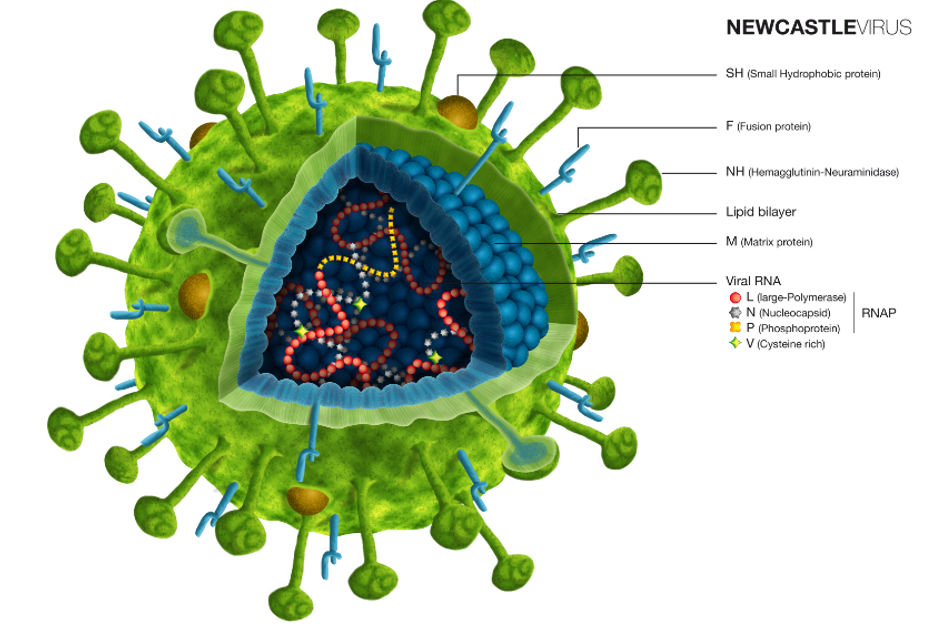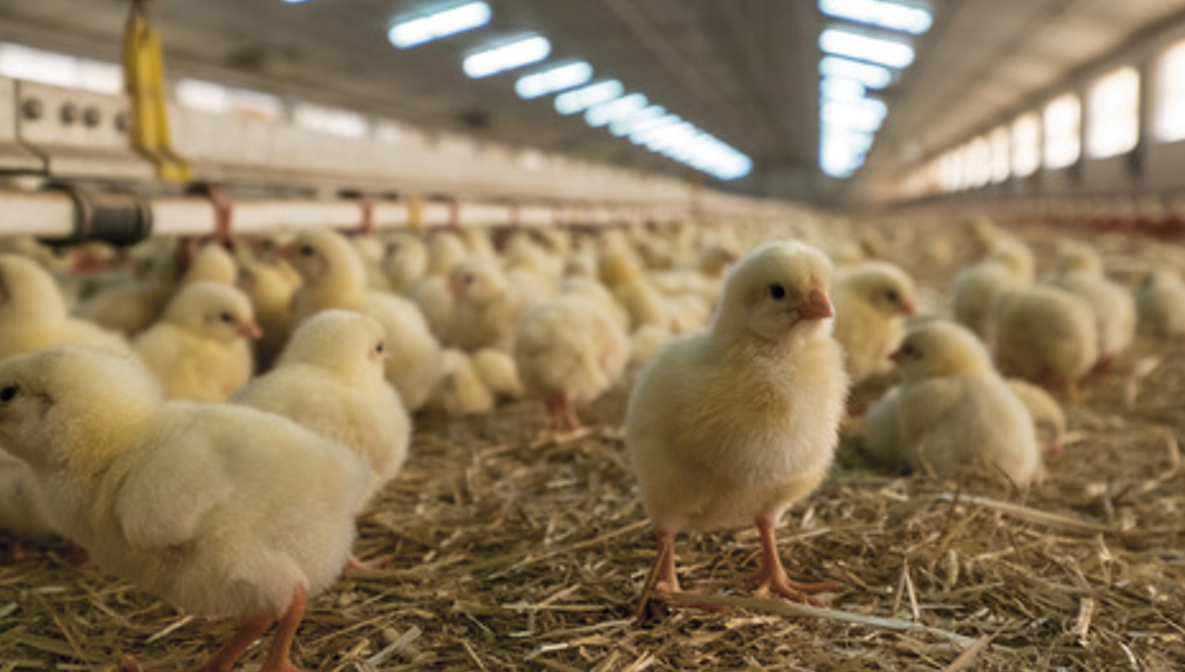



Newcastle disease: How to control the disease and reduce post-vaccine reactions
Newcastle disease is one of the major diseases of poultry, present in almost every country in the world and causing economic losses because of high levels of mortality, decreased production and trading embargos. It is listed as a notifiable disease by the W.H.O. – World Health Organization.The Newcastle virus is a member of the family Paramyxoviridae, genus Avulavirus. There are ten serotypes, but only serotype 1 causes Newcastle disease (APMV-1). Below is a representation of the virus.

Live vaccines are very important for the control and prevention of Newcastle disease, to provide local protection and prime for the inactivated vaccine. When choosing the live vaccine strain, we face a dilemma, reaction versus protection.
Normally the best protection comes with undesirable post-vaccine reactions, whilst the vaccines with a reduced post-vaccine reaction provide more limited protection.
To analyse the protection of the vaccine and the reaction, it is important to understand a few points:
- The method of vaccination: Ideally, the best method of vaccination for Newcastle vaccines are spray or eye drop. It is very important to check the size of the droplets, as fine drops can cause reactions. The ideal droplet size is between 160 – 180 μ
- The performance of the vaccination: Regardless of the method of vaccination chosen, it is important to carry it out correctly. In the case of poor performance of the vaccination, it is possible for a "rolling effect" to occur: if the vaccination does not reach all the birds at the same time, some of the birds will have contact with the vaccine virus later on, causing a reaction.
- Maternal antibodies: In the case of Newcastle vaccination, maternal antibodies are important in order to minimise any vaccine reaction and to give the birds humoral protection until the inactivated vaccine takes effect.
- Choice of strain: As mentioned before, the less reactive strains will confer limited protection and strains that are more reactive will provide better protection. The process of choosing will have to take account of the pressure of infection in the region. Normally the LaSota strain is one of the most popular, as it provides good protection.
- The vaccine titre: The titre will influence control of the disease and the shedding of the virus, 10 4.0 being the minimum titre for control of clinical signs (Cornax et al., 2012), however control of clinical signs is not enough, it is important to reduce the shedding of the virus. Hipraviar®Clon and Hipraviar®Clon/H120 have a minimum titre of 10 6,5
HIPRA has developed cloned Newcastle vaccines, Hipraviar®Clon and Hipraviar®Clon/H120, with the CL/79 cloned strain based on the LaSota strain.
As the LaSota strain is heterologous with different subpopulations, and each subpopulation can have different levels of pathogenicity and immunogenicity, we chose subpopulations with a lower pathogenicity and better immunogenicity to develop the CL/79 strain, the process of replication of those subpopulations is the cloning. The normal I.C.P.I (Intracerebral pathogenicity index) for the LaSota strain is 0.4. The Hipraviar®Clon and Hipraviar®Clon/H120 ICPI is 0.15. The ICPI is used as an indication of reaction.

Hipraviar®Clon and Hipraviar®Clon/H120 are the best options for better protection and a lower reaction.
HIPRA has several publications about Hipraviar®Clon and Hipraviar®Clon/H120. The links to some of them are shown below.
The link below shows a challenge trial with Hipraviar®Clon, showing the protection against the genotype XII virus:
https://www.hipra.com/portal/en/hipra/knowledge/pubdetail/vaccination-programmes-newcastle-disease-broilers
The link below is a publication about an I.B. field challenge with birds vaccinated using Hipraviar®Clon:
https://www.hipra.com/portal/en/hipra/knowledge/pubdetail/comparative-vaccines-hipraviar-newcastle-nvd-poultry
| References | ||||
|---|---|---|---|---|
| Bhuvaneswari S, Tirumurugaan KG, Venkatesan P, Manesh Kumar P, Kumanan K. | ||||
| (2017) | Evaluating the efficacy of LaSota vaccination induced protection in chickens upon challenge with a genotype IV strain of Newcastle disease virus. Virus disease. | |||
| Al-Garib, A. L. J. Gielkens, E. Gruys and G. Koch. | ||||
| (2003) | Review of Newcastle Disease virus with particular references to immunity and vaccination. S.O.. World’s Poultry Science Association | |||
| I. Cornax, P.J. Miller, C.L. Afonso. | ||||
| (2012) | Characterization of live LaSota vaccine strain-induced protection in chickens upon early challenge with a virulent Newcastle disease virus of heterologous genotype. Avian Dis., 56, |









